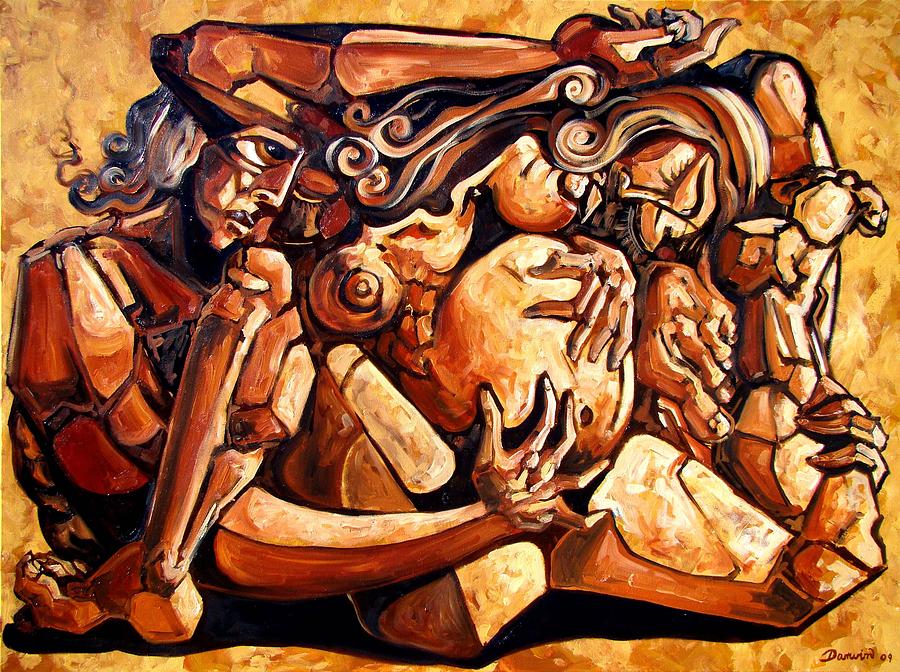Post by HLTD50 student KAKhalfan
Traditionally, creativity has not been seen as a type of medical practice that could better the health outcomes of patients. Doctors have been traditionally recognized for their abilities to make decisions solely through their medical knowledge and experiences (Baruch, 2017). Through this recognition, patients relay their illness through means of storytelling; that is, a sort of “dumbed-down” version of their medical symptoms. In fact, storytelling has been the most fundamental mode of communication for humans throughout history (Widrich, 2012). Therefore, it is appropriate to claim that creativity has been present throughout history as without some form of creativity, storytelling would never exist. Despite this, creativity has lost its social importance as cleverness and intellect have overshadowed the benefits and outcomes of creativity (Fearon, 2015).
Like the prisoners in Plato’s Allegory of the Cave, we do not like to create our own stories as it requires experiences outside of our comfort zone. We tend to get so consumed with the thoughts of what others will think of our stories that we ignore our potential for storytelling. We become prisoners within our thoughts, making it difficult to communicate stories of our illness to our medical doctors.
I too am a prisoner.
I find that every time I have to visit the doctor, I prepare prior to my visit at the same degree as my preparation for a university exam. The accelerated anxiety I feel before my visits to the doctor and in that dreaded waiting room, suppresses my thoughts and explanations of my symptoms.
*
For example, a couple of years ago I had to visit my medical doctor for a stomach issue that was causing multiple discomforts (For the sake of your time, I won’t get into the details). Despite feeling noxious and unable to think, move, or eat, I was still feeling much anxiety before going to the doctor’s office. However, I kept telling myself that they would prescribe me with something that would deplete the symptoms and make me feel better faster than my homemade Indian-derived remedies. Anyways, I made it to the doctor’s office. Still anxious, still noxious. I sat down in the waiting room preparing my story from the onset of the symptoms to the current period. I was finally feeling less anxious now that I had prepared for the doctor as I would not be wasting his time and medical knowledge on a chaotic cyclical story. However, the anxiety quickly escalated once I was sitting on the exam table waiting for the doctor to arrive.
I was reviewing the story of my symptoms.
He finally arrived after fifteen minutes that felt like an hour. At that point, I felt the cyclical, chaotic story arriving. I just could not gather the details of my onset to the current state. It was as if my mind drew a blank and I was never feeling ill. I could feel him getting impatient. I could visualize his medical knowledge draining every second the clock ticked. After a couple of minutes of trying to piece my story together, I could not. At that point, I gave up storytelling and began reciting a list of my symptoms, in point form, as if I had them written down, and he was expecting them:
- “Nausea”
- “Fatigue”
- “Queasiness”
- “Headaches”
- “Supressed hunger”
- “Lazy”
- “Incapable”
However, my incapability of storytelling my illness is not the fault of the doctor but academia. We tend to rank everyone on their talents and capabilities in a social hierarchy based on their degree of study. Medical doctors are ranked as intellectual science students while those without scientific approaches to learning are ranked as lacking in skills necessary for the peak of the social hierarchy. This causes storytelling in medicine to be diminished as medical doctors “decided [they] knew enough about the body by virtue of reducing it to its parts that [they] did not need to hear out its inhabitant” (Charon, 2005, p. 161). This is particularly problematic as research depicts that stories are usually more relatable with what medical doctors actually do and how they actually live their lives “than does the latest randomized control trial” (Ofri, 2016, p. 1006).
To conclude, the stories of patients like myself are of great importance for medical doctors to interact with as it shines light toward different perspectives for doctors to correctly diagnose and treat. Medical doctors should use art-based approaches to understand patient stories regarding their illness. On the same note, patients should understand that not all doctors are strictly there to “diagnose, treat, and repeat”. Doctors and patients must mutually understand each other in the storytelling process in order to breakdown the social hierarchy that academia has created (de Leeuw et al., 2017). It is then that symptoms transition from a list-like form into a prominent story with details, making it possible for further intervention.
